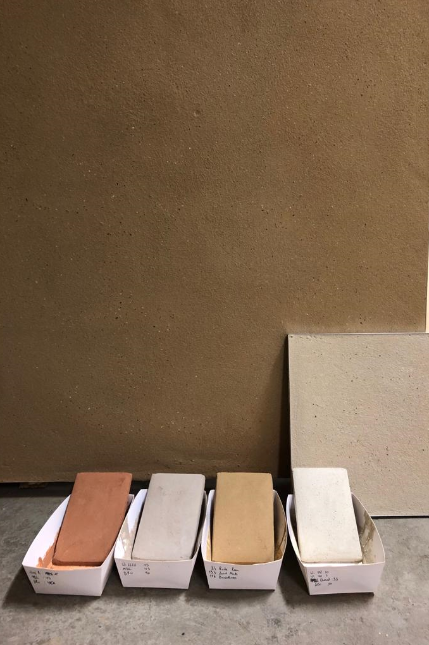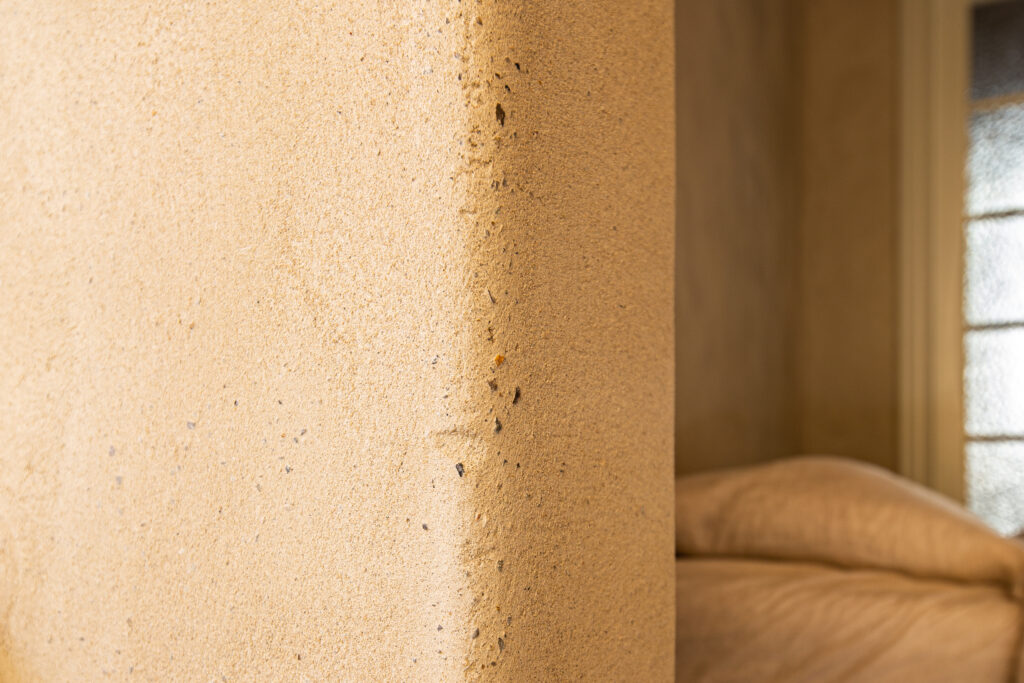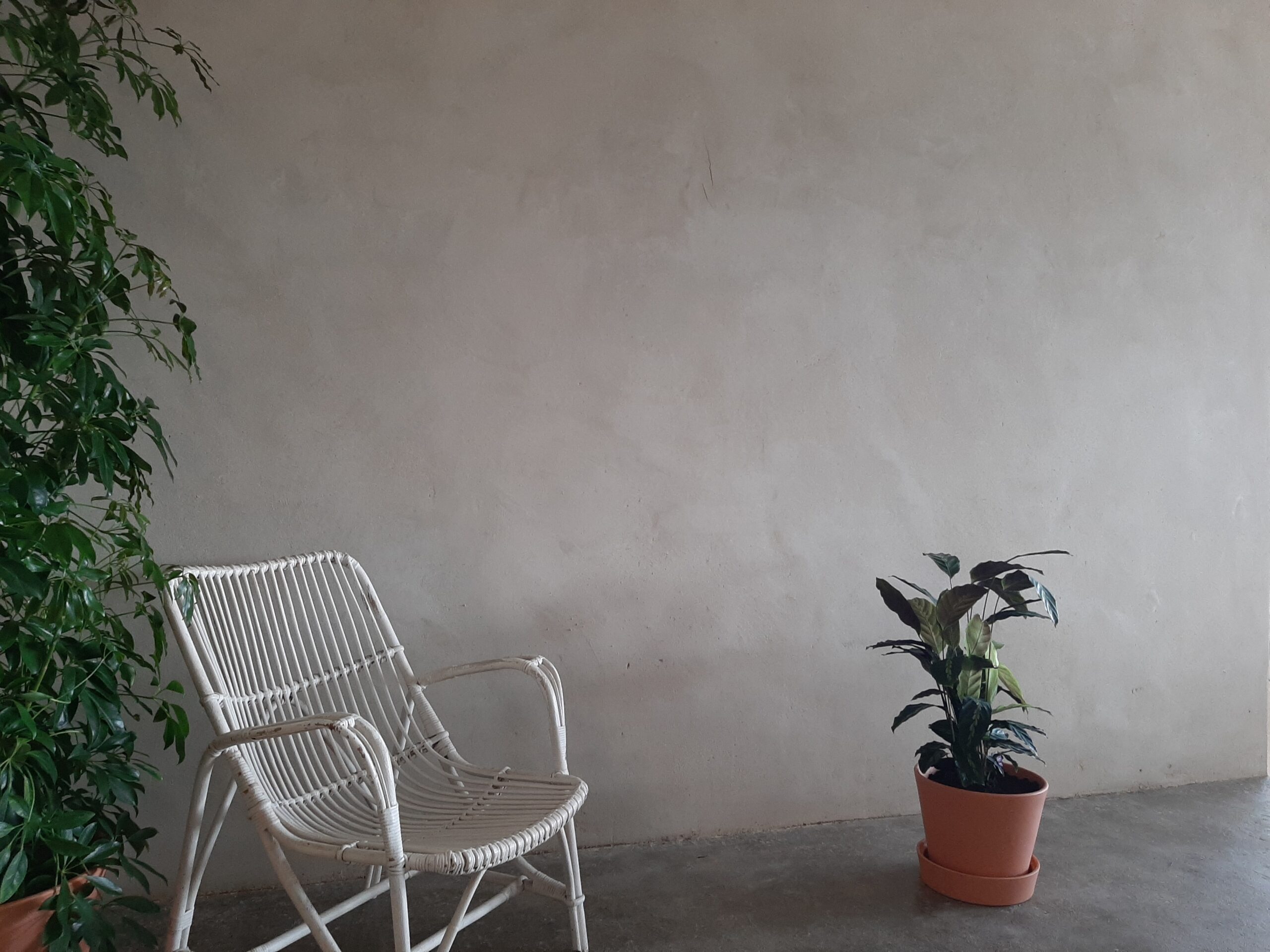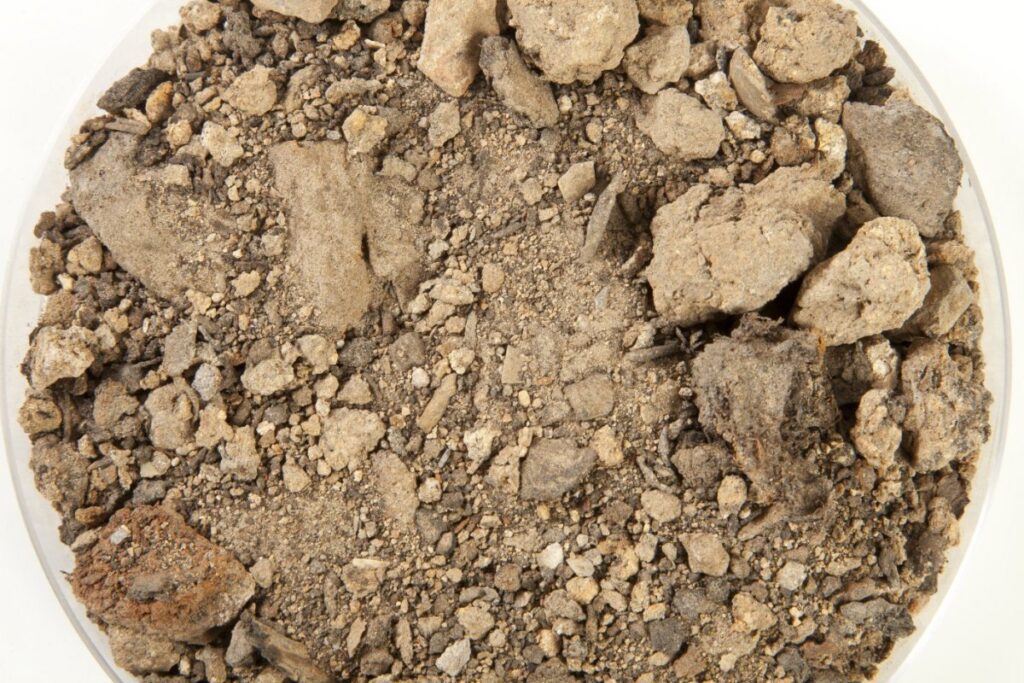The soil that is excavated for construction sites is generally considered as waste, while it can be processed into a very useful construction material. After mixing the soils with rainwater, it can be transformed into loam plasters, loam bricks and stamped loam. This earth material is infinitely re-usable: the basic materials can be reused in new constructions by adding water. An ideal circular solution.
Loam plaster is made of:
- Clay
- Sand
- Loam
- Gravel
- Rainwater
The production process
- By combining different flows of earth movement – excavated soil for construction sites, which is considered “waste” by others – with a very limited amount of rainwater – products are created that do not cause any waste and are fully recyclable: loam plasters, loam bricks & rammed earth.
- The production is be done using simple machines on electricity, without a baking process.
- First, the raw materials are purified with a sieve machine.
- Then, they are mixed together in planetary mixer.
- The plasters and rammed earth are then immediately filled into big bags. For the loam bricks, the mixture is pressed in a hydraulic press.

These earth materials are infinitely reusable.
Applied
These earth materials can be applied on walls, furniture and many other surfaces.

Environmental impact
- The loam plasters are geo-based: they are based on ‘waste’, since earth movement is officially regarded as waste, but it is perfectly usable in a construction context.
- By intervening in the transport of earth movement, CO2 emissions and deposition of usable material are avoided.
- The materials are infinitely reusable: when te building and the materials are demolished, earth materials can be perfectly re-mixed and used without loss of value or qualities. Since no chemical connection has been made, the basic materials can be reused in new constructions with the addition of water.
Also nice!
- Vapor-permeable
- Sound absorbing
- Mitigation of temperature changes: keeps spaces cooler in summer and warmer in winter
- Odor-dissolving



